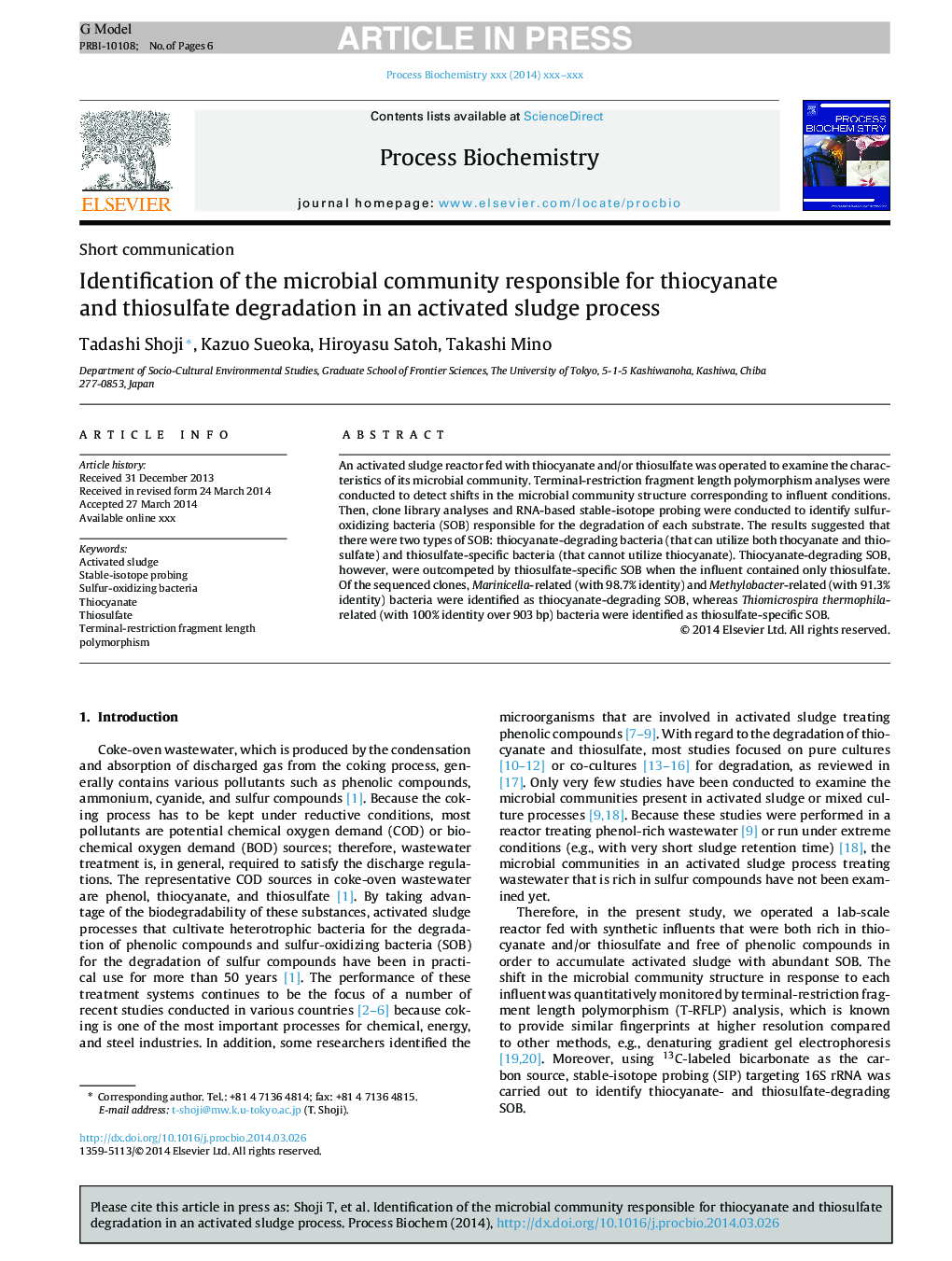| Article ID | Journal | Published Year | Pages | File Type |
|---|---|---|---|---|
| 10235173 | Process Biochemistry | 2014 | 6 Pages |
Abstract
An activated sludge reactor fed with thiocyanate and/or thiosulfate was operated to examine the characteristics of its microbial community. Terminal-restriction fragment length polymorphism analyses were conducted to detect shifts in the microbial community structure corresponding to influent conditions. Then, clone library analyses and RNA-based stable-isotope probing were conducted to identify sulfur-oxidizing bacteria (SOB) responsible for the degradation of each substrate. The results suggested that there were two types of SOB: thiocyanate-degrading bacteria (that can utilize both thocyanate and thiosulfate) and thiosulfate-specific bacteria (that cannot utilize thiocyanate). Thiocyanate-degrading SOB, however, were outcompeted by thiosulfate-specific SOB when the influent contained only thiosulfate. Of the sequenced clones, Marinicella-related (with 98.7% identity) and Methylobacter-related (with 91.3% identity) bacteria were identified as thiocyanate-degrading SOB, whereas Thiomicrospira thermophila-related (with 100% identity over 903Â bp) bacteria were identified as thiosulfate-specific SOB.
Keywords
Related Topics
Physical Sciences and Engineering
Chemical Engineering
Bioengineering
Authors
Tadashi Shoji, Kazuo Sueoka, Hiroyasu Satoh, Takashi Mino,
